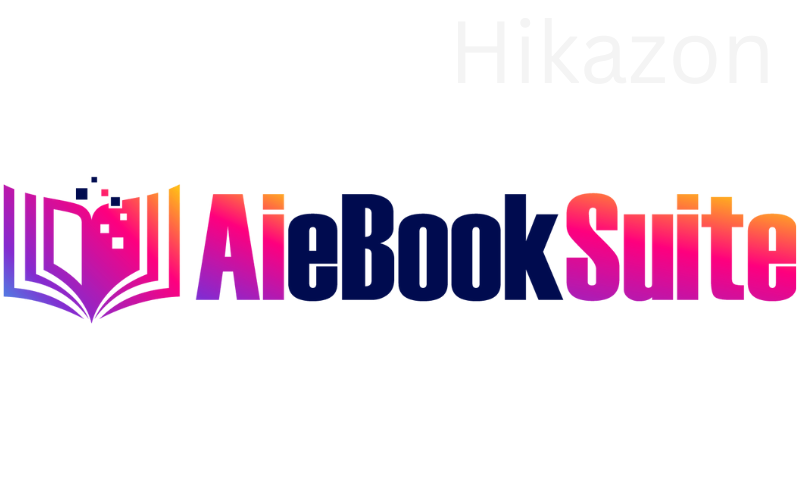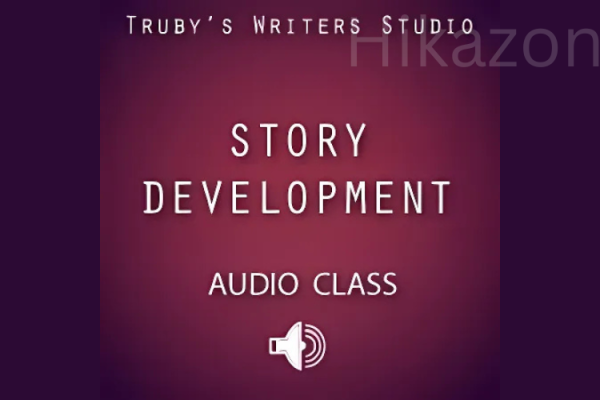-
×
 Epigenetics and Neuroplasticity By John Demartini
1 × $6.00
Epigenetics and Neuroplasticity By John Demartini
1 × $6.00 -
×
 US indices system by LaMartinatradingFx
1 × $10.00
US indices system by LaMartinatradingFx
1 × $10.00 -
×
 DMs On Demand By Myron Gaines
1 × $5.00
DMs On Demand By Myron Gaines
1 × $5.00 -
×
 Habits For Highly Effective Jiu-Jitsu By Garry Tonon
1 × $5.00
Habits For Highly Effective Jiu-Jitsu By Garry Tonon
1 × $5.00
AI Ebook Suite
$97.00 $5.00
AI Ebook Suite – Digital Download!
Content Proof:
AI eBook Suite
In today’s fast-paced digital landscape, the integration of artificial intelligence (AI) into various sectors has reached unprecedented levels of sophistication, and the AI eBook suite exemplifies this evolution in the realm of publishing. This suite not only streamlines the eBook creation process but also enhances the quality and accessibility of content for writers and readers alike. With AI-powered tools, authors can efficiently generate ideas, structure narratives, and even design visually appealing layouts without the need for hefty investments in professional services or extensive technical know-how. This transformation caters to both emerging authors seeking to make their mark and seasoned writers aiming to optimize their productivity.
Imagine stepping into a world where writing an eBook is as simple as having a conversation with a friend. Tools that leverage AI capabilities turn complex writing tasks into manageable, bite-sized steps. Whether it’s brainstorming concepts or refining a final draft, these tools are proving indispensable in overcoming common challenges faced by authors. The AI eBook suite not only enables the iron-clad collaboration between creators and technology, but it also fosters an environment rich with creativity and innovation. The increased accessibility to advanced writing and design tools helps democratize publishing, allowing diverse voices to emerge and flourish in the literary landscape. This article delves into the various facets of AI eBook suites, exploring their capabilities, benefits, and practical implementation.
AI Writing Tools
Artificial intelligence writing tools serve as a transformative force in the modern writing landscape, especially for authors working on eBooks. These tools enhance the writing experience by simplifying tasks that traditionally required considerable time and effort. Think of them as virtual assistants, tirelessly at your side, ready to jump into action whenever you hit a snag in your writing. In comparing these tools, it’s important to look at their functionalities, the quality of the content they produce, and their overall usability.
For instance, Jasper.ai, known for its sophisticated AI algorithms, excels at generating high-quality long-form content, specifically tailored for eBooks. It can adapt to various genres, effectively mimicking different writing styles based on user input. Meanwhile, Writesonic shines in its speed and efficiency, allowing users to create engaging copy almost instantaneously, which is invaluable when working against deadlines.
In another corner, Sudowrite appeals specifically to fiction writers. It takes creative approaches to suggest character arcs, plot developments, and even descriptive language, helping authors to break free from creative blocks. It is as if collaborators from different genres were all speaking together in harmony, aligning their insights to capture the attention of readers.
Here’s a succinct comparison of some notable AI writing tools:
| Tool | Specialization | Key Features | Pricing |
| **Jasper.ai** | Long-form content | SEO tools, adaptable style | Starts at $29/month |
| **Writesonic** | Marketing copy | Fast generation, templates for various formats | Free tier available |
| **Sudowrite** | Fiction writing | Creativity enhancement, character suggestions | Starts at $10/month |
| **Rytr** | Versatile content | Genre templates, budget-friendly | Free tier available |
| **Copy.ai** | Marketing & Sales | Copywriting tools, industry-specific features | Free tier available |
As the realm of writing evolves, AI writing tools stand as essential companions for authors seeking to streamline their workflow, enhance their writing quality, and ultimately create a compelling reader experience in their eBooks.
Benefits of AI Writing Tools
The advantages of utilizing AI writing tools extend far beyond mere convenience. They empower authors by facilitating smoother, more productive writing journeys, allowing for greater creativity and originality in eBook development. Here are some of the significant benefits:
- Increased Efficiency: Imagine being able to translate your thoughts into written words with stunning speed. AI writing tools significantly reduce the time spent on drafting, editing, and refining content, enabling authors to move rapidly through the writing process.
- Enhanced Quality: Many AI tools incorporate advanced grammar and style checking features. As a result, authors can produce more polished and professional content without intensive editing after completing their drafts.
- Overcoming Writer’s Block: Writer’s block can feel like a formidable wall, but AI tools can help chip away at it with prompts and idea suggestions that reignite creativity, filling the gaps where inspiration may falter.
- Research Assistance: AI can aid authors in gathering relevant information quickly, minimizing the time typically spent scouring through endless sources and ensuring that writers have access to accurate and up-to-date data.
- Personalization of Content: AI can analyze audience preferences and tailor content to meet the specific needs of targeted demographics, allowing authors to resonate with their readers more effectively.
- Cost-Effectiveness: Utilizing AI writing tools can be more budget-friendly compared to hiring professional editors or writers, making these solutions accessible to a broader range of authors.
- Collaborative Capabilities: Features that enable real-time collaboration allow multiple authors to contribute seamlessly, streamlining the co-authoring experience and improving feedback loops.
- Comprehensive Writing Assistance: Platforms like Designrr.io and Jasper.ai not only assist with content generation but also integrate eBook design, consolidating various aspects of the writing process.
In essence, AI writing tools foster an environment ripe with opportunity for authors, transforming writing from a solitary venture to a dynamic collaboration accessible to all. Whether you’re crafting your first eBook or publishing multiple titles, the benefits of AI writing tools cannot be overstated they stand as a beacon of hope for writers seeking to make their mark on the literary world.
Popular AI Writing Tools for eBooks
When it comes to producing high-quality eBooks, selecting the right AI writing tool can make all the difference. Here’s a closer look at some of the most popular tools that have made substantial impacts in the realm of eBook creation:
- Jasper.ai: Widely regarded for its competency in long-form content generation, Jasper offers genre-specific writing templates. Additionally, features like SEO optimization help authors create content tailored for online visibility, ensuring that the eBook finds its audience.
- Writesonic: This innovative tool excels in producing varied types of content rapidly from eBooks to blog posts and advertising copy. The interface is user-friendly, allowing writers to easily adapt styles that suit their distinct needs.
- Rytr: Known for its versatility, Rytr facilitates the creation of extensive content across different genres and formats. With a variety of templates available, authors can quickly select the writing style that aligns with their project.
- ChatGPT: Keyboard-driven and versatile, ChatGPT is highly adaptable for drafting sections of eBooks and brainstorming ideas, paving the way for storytelling in contemporary formats.
- Sudowrite: Specifically designed for fiction writers, Sudowrite relieves the pressure of world-building and character development. With features that aid in creative processes, writers can bring their imaginative visions to life.
The characteristics and strengths of these tools cater to a wide range of author profiles:
| Tool | Primary Strengths | Ideal For |
| **Jasper.ai** | Long-form, SEO optimized text | Non-fiction and Blogs |
| **Writesonic** | Fast content production, diverse formats | Marketing and Fiction |
| **Rytr** | Versatility across content types | General eBooks |
| **ChatGPT** | Versatile text generation and brainstorming | Collaborative writing |
| **Sudowrite** | Unique storytelling and creative writing | Fiction authors |
These tools exemplify the potential of AI-supported writing, equipping authors with the abilities needed to refine their craft and expedite the eBook development process.
How AI Improves Writing Efficiency
AI technology has fundamentally transformed the landscape of writing, enhancing productivity and efficiency across various creative endeavors. With streamlined processes and innovative features, these tools allow authors to express their ideas with greater fluidity. Here’s how AI contributes to improved writing efficiency:
- Speed: AI writing tools can generate content faster than human writers. This is crucial when working under tight deadlines, providing the ability to meet publishing schedules without compromising quality.
- Consistency: Maintaining a consistent tone and style is vital for brand identity. AI tools accomplish this seamlessly by adhering to set stylistic guides and using algorithms to ensure coherence across the text.
- Cost-effectiveness: Many authors, particularly independent or emerging writers, may face constraints in hiring professional writers or editors. Utilizing AI can drastically reduce related costs while increasing content volume.
- Creative Stimulation: AI-driven prompts and suggestions can help overcome writer’s block, encouraging creativity and allowing authors to explore new directions their content can take.
- Data-Driven Insights: Advanced analytics features integrated into AI writing tools can provide authors with insights into reader engagement and preferences, guiding them in their writing and marketing strategies.
In summary, the integration of AI into the writing process significantly enhances writing efficiency and quality across all stages of eBook development. By leveraging advanced technology, authors can focus on storytelling, creativity, and engagement ultimately enriching the overall reading experience.
eBook Creation Process
Creating an eBook from scratch may feel overwhelming, but embracing AI tools can simplify this process significantly. Envision the eBook creation journey as traveling a path where each step is guided by intelligent navigation. Each stage of the journey is made more precise and efficient through AI-powered assistance.
- Choosing a Topic: Selecting a relevant topic is crucial. AI can help analyze market trends and identify the interests of your target audience, ensuring that you choose a subject that resonates.
- Organizing Content: Structuring your eBook begins with creating an outline. AI tools can assist in generating a logical flow of content by suggesting potential chapters and subtopics based on the central theme.
- Writing the eBook: Begin drafting your eBook by focusing on valuable, engaging content. AI tools can facilitate this process by offering word suggestions, sentence rephrasings, and grammar checks in real time.
- Reviewing and Editing: Following the initial draft, thorough review and editing are imperative. AI tools can aid in proofreading and formatting, allowing you to examine content for clarity and cohesiveness.
- Design and Formatting: The visual appeal of an eBook is as crucial as the written word. AI platforms can automate the formatting process, ensuring that the layout is both professional and user-friendly.
Through the eBook creation process, leveraging AI tools fosters creativity while minimizing frustrations. By simplifying complex tasks, writers can engage their audiences while producing high-quality digital content efficiently.
Steps to Create an eBook Using AI
The enterprise of creating an eBook can be broken down into concrete steps, embracing the synergy between AI tools and the author’s vision. By systematically applying AI capabilities, writers can navigate the eBook creation process and achieve high-quality results more efficiently. Here’s an outline of the steps to create an eBook using AI:
- Define Your Niche: Researching your target audience and identifying specific niches within your genre is crucial. Use AI analytics tools to pinpoint what resonates with readers in your chosen area.
- Generate Ideas: Brainstorming can sometimes feel like climbing a mountain. AI tools, like ChatGPT, can spark fresh ideas and perspectives, empowering you to expand upon foundational concepts.
- Outline Your Content: Utilize AI-powered outline tools to develop a structured table of contents. This organized approach will guide your writing and ensure comprehensive coverage of key aspects.
- Drafting Your eBook: Once an outline is established, begin drafting your content. Implement AI writing tools to assist with specifying tone, style, and content flow.
- Editing and Proofreading: Engage AI tools for a thorough editing process. Tools like Grammarly or ProWritingAid can catch errors that human eyes might overlook and suggest enhancements.
- Formatting and Design: The appearance of your eBook speaks volumes. AI can help format your document correctly and design professional layouts that capture reader interest.
- Publishing and Distribution: Choose a self-publishing platform suited for your goals, such as KDP or Draft2Digital. AI can offer insights into optimal pricing, keywords, and promotional strategies.
- Continuous Improvement: Once published, continually analyze engagement data. AI can help track reader behavior to refine future projects, keeping your writing in touch with audience preferences.
By approaching the eBook creation process with structured steps enriched by AI tools, authors can leverage technology to enhance their creativity and productivity, ultimately delivering compelling reading experiences.
Research Methods with AI Assistance
Research forms the backbone of effective eBook writing, providing substance and credibility. However, researching can often be time-consuming and overwhelming. Here’s where AI assists in streamlining these efforts, allowing authors to focus on their creative processes while ensuring strong factual foundations.
- Identifying Reliable Sources: AI-driven platforms can automate the identification of trustworthy sources relevant to your topic. Tools like Semantic Scholar can sort through extensive databases, highlighting key papers, articles, and publications that contribute valuable insights.
- Data Analysis: AI analytics tools can sift through mountains of data to uncover trends and patterns that might otherwise remain hidden. This can enrich the content, allowing authors to delve deeper into relevant topics.
- Keyword Optimization: AI can help identify trending keywords associated with your eBook’s themes. Implementing these keywords can boost the visibility of your eBook by aligning it with market demand.
- Compiling Information: Using AI-based summarization tools, authors can condense lengthy articles or studies into digestible snippets, enabling quicker assimilation of crucial information.
- Continuous Updates: The world is constantly evolving, and so is information. AI tools can alert authors to new research or emerging trends within their field, ensuring your content remains relevant and updated.
- Fact-Checking: AI can assist in verifying facts or identifying potential inaccuracies within the text. Tools designed for fact-checking can ensure the integrity of your eBook and strengthen its credibility.
By harnessing AI to facilitate research, authors can enrich their writing with well-sourced information, substantiate arguments effectively, and improve reader trust in their eBooks.
Outlining Your eBook with AI
An effective outline is critical to crafting a coherent and compelling eBook. It serves as a roadmap that guides the writing process while ensuring that vital points aren’t overlooked. AI tools can be invaluable in generating and refining outlines, fostering clarity in storytelling. Here’s how you can outline your eBook with AI assistance:
- Generate Topics: Use AI brainstorming tools (like Jasper.ai) to identify potential topics that resonate with your audience. It can suggest ideas based on the current market and trends.
- Creating a Structured Framework: You can utilize AI tools like MindMeister or Trello to help organize ideas visually. Mapping out sections and chapters enables you to visualize the overall flow of content.
- Defining Key Points: With AI assistance, you can identify and define key points or concepts to cover in each section. It can suggest subtopic divisions based on the main theme, ensuring thorough exploration.
- Refining the Outline: AI-driven reviews of your outline can provide insights on potential gaps or redundancies that may need to be addressed, enhancing overall cohesiveness.
- Incorporating Feedback: Following the development of an outline, engaging collaborative AI tools can facilitate feedback gathering from peers or beta readers. This iterative approach helps identify areas for improvement.
By leveraging AI for outlining, authors can create refined structures that set the stage for compelling narratives while making the writing process less daunting.
Content Generation
The landscape of content creation has evolved dramatically with the advent of AI technologies. By integrating generative AI capabilities, authors can now refine their writing processes, boost productivity, and personalize their content in unprecedented ways. With AI’s help, writers are no longer solely responsible for labor-intensive tasks, allowing them to focus more on creativity and narrative development.
AI content generation tools automate the drafting process by producing initial content quickly and efficiently. They are adept at generating drafts, optimizing SEO, and even crafting social media posts. This technology doesn’t just enhance speed; it fundamentally shifts the traditional writing paradigm, enabling authors to create high-quality material without the typical delays associated with content generation.
AI’s Role in Content Creation
AI plays a pivotal role in reshaping content creation by helping writers unlock their creative potential. Here are key ways AI contributes to effective content development:
- Idea Generation: AI tools can analyze vast datasets and spot patterns to generate unique ideas. This is invaluable for writers experiencing creative blocks or looking to explore new angles.
- First Draft Creation: With capabilities to produce first drafts based on provided guidelines, AI tools allow authors to bypass initial writing hurdles, presenting a foundation upon which they can build.
- Editing and Refinement: Many AI platforms include editing features that assist in improving grammar, coherence, and overall readability. This means that final edits spend less time being tedious chores.
- Personalized Feedback: AI writing assistants can analyze your previous works and provide tailored suggestions to better align with your established voice, ensuring you remain authentic throughout your eBook.
- Genre Adaptation: AI can help tailor content to match specific genres or audiences, suggesting stylistic adjustments to fit different narrative styles effectively.
By facilitating these processes, AI not only enhances the efficiency of content generation but also contributes to the creativity and uniqueness of the eBook that authors deliver.
Quality of AI-Generated Content
Quality is a paramount concern in the realm of AI-generated content, especially when it comes to eBooks. While AI tools streamline writing and enhance efficiency, maintaining high-quality output is crucial for author credibility. Here’s how AI impacts and ensures the quality of generated content:
- Consistent Style: AI can ensure that content adheres to a particular style guide or tone, maintaining uniformity throughout the work, which is essential for author branding.
- Error Detection: Advanced AI algorithms can identify grammatical errors, typos, and inconsistent phrasing, thereby reducing the likelihood of mistakes slipping into the final draft.
- Clarity and Readability: By analyzing sentence structure and overall clarity, AI tools can suggest revisions aimed at improving the comprehensibility of the content, making it more engaging for readers.
- Content Evaluation: User feedback and data analytics can provide insights into the effectiveness of generated content. Authors can evaluate how their readers respond, allowing for continuous improvement.
- Addressing Bias: Developers of AI tools are increasingly focusing on mitigating bias in language generation, ensuring respectful and inclusive content across various subjects.
- Human Quality Checks: Despite AI’s capabilities, combining technology with human review remains vital. The nuanced insights of a human editor or proofreader enhance the final product, ensuring quality resonates with intended audiences.
By leveraging AI-generated content and implementing necessary quality checks alongside human oversight, authors can ensure their eBooks attain the standards necessary in the modern publishing landscape, fostering connections with readers and promoting positive engagement.
Enhancing Creativity with AI
AI technology is enhancing creativity in numerous ways, revolutionizing how authors approach their writing processes. By functioning as a collaborative partner rather than a replacement, AI tools empower writers to innovate and explore previously unthinkable avenues. Here are several angles through which AI fosters creativity:
- Idea Expansion: AI can provide a plethora of ideas or concepts that authors might never have considered, broadening creative horizons and encouraging exploration into diverse themes and narrative paths.
- Collaborative Writing: By functioning as an interactive brainstorming partner, AI allows authors to explore alternative storylines, plot twists, and character arcs, significantly enriching the narrative development process.
- Conceptual Visualization: Many AI tools can help authors visualize narrative structures or character relationships, facilitating a clearer understanding of how their story unfolds.
- Language Generation: AI’s ability to suggest varied vocabulary or phrases can introduce a richness to the text that enhances the writer’s style and expression, leading to captivating storytelling.
- Feedback Loops: AI-generated insights and critiques can lead authors to reassess their ideas or approaches, pushing them to think critically about their work and encouraging improvements where necessary.
- Cross-Genre Exploration: AI tools can help bridge gaps between genres, suggesting amalgamations that can lead to innovative storytelling forms, opening doors to unique eBook concepts that cater to diverse audiences.
AI is critical in expanding the creative toolkit for authors, ultimately serving to enhance originality, encourage experimentation, and cultivate richer narratives that resonate powerfully with readers.
Editing and Proofreading
Editing and proofreading are essential practices that determine the quality and professionalism of any written work, including eBooks. As such, leveraging AI-powered tools can efficiently streamline these processes, ensuring that the final product is polished before publication. Here’s how AI enhances editing and proofreading:
- Grammar and Style Check: AI tools like Grammarly and ProWritingAid can detect grammar errors, misused punctuation, and stylistic inconsistencies, saving authors time and effort in manually reviewing their work.
- Contextual Suggestions: Advanced AI editing tools have the ability to understand context and semantics, allowing them to make suggestions that enhance clarity and improve the overall flow of the content.
- Plagiarism Detection: Unintentional plagiarism can tarnish an author’s reputation. Many AI tools offer plagiarism detection services, ensuring the originality of content and maintaining ethical writing standards.
- Readability Improvements: AI-driven platforms often assess readability scores, suggesting adjustments to improve the accessibility of the text. This is particularly beneficial for eBooks, as clearer content engages wider audiences.
- Rapid Turnaround: Automated editing reduces the time involved in the reviewing process. Authors can rely on AI tools for quick revisions, allowing for more time spent on creative aspects of writing.
- Integration with Writing Platforms: AI editing tools often integrate seamlessly with popular writing software and platforms, fostering a smooth workflow and providing real-time feedback as authors write.
By employing AI-driven tools for editing and proofreading, authors can ensure their eBooks meet high standards, enhancing the overall reader experience.
AI Tools for Editing eBooks
As the digital publishing landscape continues to evolve, several AI tools specifically cater to the editing and proofreading needs of authors. Here’s a closer look at some of the most effective tools available to assist in this critical phase of eBook creation:
- Grammarly:
- Pricing: Free tier with basic features; Premium starts at $12/month.
- Features: Comprehensive grammar and style checker with real-time suggestions, plagiarism detection, and tone improvement suggestions. Ideal for all writers aiming for clarity and professionalism.
- ProWritingAid:
- Pricing: Free tier available; Premium starts at $20/month.
- Features: Combines grammar checks with style reports, in-depth writing analysis, and integrations with multiple platforms. Particularly useful for authors seeking to elevate their writing style.
- Hemingway Editor:
- Pricing: Free online tool; desktop app available for $19.99.
- Features: Focuses on improving readability by highlighting complex sentences and suggesting simpler alternatives. Encourages concise writing essential for engaging eBooks.
- WhiteSmoke:
- Pricing: Paid service; pricing varies based on subscription plans.
- Features: Advanced grammar and punctuation checking with real-time corrections. Its translation features make it suitable for multilingual authors.
- Ginger:
- Pricing: Free tier available; Premium options start at $20.97/month.
- Features: Comprehensive grammar-checking capabilities alongside translation features that make it versatile for diverse author needs.
- Linguix:
- Pricing: Free tier with limited features; Pro versions starting at $10/month.
- Features: Style checker and AI writing assistant that improves vocabulary choice and offers personalized suggestions.
This arsenal of AI tools empowers authors to refine their editing and proofreading processes, ensuring their eBooks achieve a level of quality that captivates readers and promotes satisfaction.
The Importance of Human Editing
While AI tools prove invaluable in the editing and proofreading stages of eBook creation, the importance of human oversight cannot be overstated. Here’s why human editing remains a crucial component in ensuring the quality and effectiveness of written content:
- Contextual Understanding: Human editors possess innate contextual comprehension that AI often lacks. They are able to catch subtleties, nuances, and patterns that may be overlooked by automated systems.
- Cultural Sensitivity: Authors often write for diverse audiences, and human editors are attuned to cultural references, idiomatic expressions, and sensitivities that AI may not fully appreciate, ensuring the content resonates appropriately.
- Ambiguity Resolution: Natural language often contains elements of ambiguity that can confuse AI systems. Human editors excel in identifying and clarifying these ambiguities, enhancing the final output’s clarity.
- Adhering to Style Guides: Maintaining consistency in brand voice and style across all content is vital. Human editors ensure strict adherence to established guidelines, which automated tools may struggle to follow accurately.
- Optimizing Audience Engagement: While AI suggests improvements, only a human editor can evaluate whether the language and tone effectively capture an audience’s preferences, tailoring the writing to maximize impact.
- Detecting Subtle Errors: AI, despite its impressive accuracy, may overlook minor nuances or stylistic refinements. Human proofreaders can spot issues such as repetitive phrases that weaken the writing.
- Ethical Considerations: Human editors play a vital role in reviewing content for ethical concerns, ensuring that it adheres to standards and is free from unintended biases or potentially offensive statements.
Ultimately, the balance between AI-driven efficiency and the insightful input of human editors ensures that eBooks attain a high-quality standard, striking a chord with readers while upholding integrity and clarity.
Ensuring Quality Assurance in AI Content
As the landscape of content generation becomes dominated by AI technologies, ensuring quality assurance throughout the eBook creation process is paramount. Here are several strategies and considerations for maintaining quality in AI-generated content:
- Human Oversight: Combining AI tools with rigorous human editing serves as a fundamental strategy to ensure quality. Human editors can review and refine AI-generated content to align with the desired tone, style, and context.
- Feedback Loops: Implementing a system of continuous feedback allows authors to solicit critiques on both the writing process and the AI’s contributions, improving the overall quality of future content.
- Content Testing: Authors can analyze reader feedback for AI-generated content, gauging its effectiveness and identifying areas for improvement. This data-driven approach contributes to refining editorial standards.
- Training Data Quality: AI models learn from vast datasets. Regularly auditing the training data ensures it reflects ethical considerations, avoiding perpetuation of any existing biases and maintaining a high standard of quality.
- Regularly Updating Systems: AI algorithms require ongoing updates and adjustments to maintain alignment with evolving language and style conventions. Keeping systems current ensures they remain effective and relevant.
- Plagiarism Checks: Employ integrated plagiarism detection features in AI tools to ensure original content creation and uphold ethical standards a vital aspect of maintaining the integrity of publishing.
- Performance Analysis: Regularly assess the performance of both AI tools and human reviewers by monitoring engagement metrics like readability scores and user feedback to enhance the quality of future content.
By adopting these strategies, authors can create a robust system for quality assurance in AI-generated content, ensuring that their eBooks meet reader expectations and uphold high standards of excellence.
Formatting and Design
The visual appeal of an eBook is just as important as its content, and formatting plays a pivotal role in shaping readers’ experiences. A well-structured, visually enticing eBook can draw readers in and keep them engaged. Here’s a detailed overview of formatting and design considerations integral to creating high-quality eBooks:
- Professional Layout: The layout of your eBook should resemble a polished print publication. Proper margins, line spacing, and font choices contribute to a visually appealing presentation that enhances readability.
- Use of Headings and Subheadings: Structuring content with headings and subheadings helps guide readers, breaking text into sections that make it easier to skim, thus accommodating various reading preferences.
- Incorporating Images and Graphics: Interactive eBooks often incorporate images, infographics, or charts. However, make sure these elements are optimized for size and relevance, enhancing rather than distracting from the text.
- Responsive Design: With readers accessing eBooks across a variety of devices, employing responsive design ensures that formatting adjusts appropriately for various screen sizes, maintaining usability.
- Consistent Aesthetics: Color schemes, fonts, and graphics should be consistent throughout the eBook to reinforce branding and create a cohesive reading experience that resonates with the intended audience.
- Final Review of Design: Before publishing, conduct a thorough review of the formatting. Engaging alpha or beta readers for feedback can offer insights into areas that may need improvement.
- Utilization of AI Formatting Tools: Platforms like Typeset and Vellum streamline the formatting process, allowing authors to focus on the writing itself while maintaining high design standards.
By focusing on these formatting and design components, authors can create eBooks that are visually captivating, user-friendly, and effective in conveying the intended message ultimately enhancing reader engagement.
Designing an eBook Cover with AI
The cover of an eBook serves as its first impression, and it can strongly influence a reader’s decision to engage with the content. Designing a captivating cover that reflects the theme and tone of an eBook is essential. Here’s how AI tools can simplify this process, helping authors create visually appealing and professional covers:
- Define Your Concept: Start by outlining key themes, colors, and styles that encapsulate your eBook. This clarity will provide direction in the design process.
- Choose AI Design Tools: Utilize platforms like Canva, Fotor, or Adobe Spark that offer AI-generated design capabilities. These tools often provide templates that can be personalized to fit the eBook’s theme.
- Crafting an Effective Prompt: When using AI book cover generators, provide a detailed brief. Mention elements like color preferences, imagery, and typography styles to guide the AI in generating suitable designs.
- Refinements and Customization: After AI-generated options are presented, select a cover that aligns with your vision. Customize the chosen design by tweaking fonts, images, and placement for optimal impact.
- Final Review: Ensure that the cover is clear and attractive even in thumbnail size, as many readers will first encounter it in a digital marketplace. Check that titles and author names are readable against the background.
- Download and Prepare for Publishing: Once satisfied with the design, download the cover in the required format suitable for your publication platform, ensuring it meets size and resolution specifications.
In employing AI for eBook cover design, authors can create professional-quality visuals that enhance the marketing and appeal of their works, ultimately drawing in prospective readers and driving interest in their eBooks.
Formatting Tools for eBook Publishing
Effective formatting tools play a crucial role in publishing a professional eBook. Here is a detailed overview of some of the most popular tools available, making the formatting process efficient and straightforward:
- Calibre:
- Capabilities: An open-source ebook management tool, Calibre can convert manuscripts into multiple eBook formats while managing metadata and organizing library collections.
- Jutoh:
- Capabilities: With Jutoh, authors can quickly format and convert manuscripts into various eBook formats, including EPUB and MOBI. Its user-friendly interface simplifies the process of creating visually appealing layouts.
- Vellum:
- Capabilities: Known for its aesthetic templates, Vellum allows authors to create high-quality eBooks quickly. It’s particularly popular among authors aiming for visually stunning designs without the complexity of code.
- Designrr:
- Capabilities: This AI-driven platform combines both content generation and design capabilities, enabling authors to convert documents into well-formatted eBooks seamlessly.
- Scrivener:
- Capabilities: While primarily a writing tool, Scrivener offers eBook formatting capabilities, allowing authors to compile and export various formats while maintaining control over design elements.
- Reedsy Book Editor:
- Capabilities: Specifically designed for self-publishing, this free tool allows authors to create professional-quality eBooks and print-ready layouts, making it suitable for both digital and physical formats.
By leveraging these formatting tools, authors can produce polished, visually appealing eBooks that meet industry standards, ensuring a positive reading experience for their audiences.
Aesthetic Considerations in eBook Design
Creating an aesthetic and reader-friendly eBook relies on thoughtful consideration of design elements. Here are key principles to keep in mind when determining the aesthetic aspects of your eBook:
- Typography:
- Choose clear, readable fonts that align with the genre. Consistency is key; limiting font types (to two or three at most) will ensure a cohesive visual experience.
- Color Schemes:
- Select a harmonious color palette that reflects the mood of the content. Using complementary colors can create a visually attractive layout without overwhelming the reader.
- Layout and Spacing:
- Ensure adequate margins, line-height, and paragraph spacing to create an inviting reading layout. Proper use of whitespace helps combat reader fatigue and enhances comprehension.
- Image Quality:
- Use high-resolution images that are relevant to the content. Ensure they are properly aligned and sized, as this affects perceived professionalism and engagement.
- Interactive Elements:
- Consider adding clickable links, multimedia elements, or annotations to engage readers further. However, these features must enhance the reading experience without overwhelming it.
- Final Visual Review:
- Conduct a thorough review of the design and layout prior to publication. Testing the eBook on various devices will ensure accessibility and usability across platforms.
Taking these aesthetic considerations into account helps authors create visually engaging eBooks that resonate with readers; a well-designed eBook invites readers to explore its content deeper while significantly enhancing their overall enjoyment.
Publishing Strategies
When it comes to effectively publishing an eBook, employing a strategic approach can significantly increase its chances of success while maximizing its reach. Here are key strategies and considerations for optimizing eBook publishing:
- Self-Publishing Platforms: Utilizing platforms such as Amazon KDP, Smashwords, and Draft2Digital allows authors to publish their eBooks with ease. Each platform offers unique advantages, facilitating broader distribution options to various retailers.
- Create a Compelling Launch Plan: Develop a detailed launch strategy that encompasses pre-launch, launch day, and post-launch activities. Engaging with early readers and gather feedback can help build momentum for your eBook.
- Leverage Social Media for Promotion: Use social media channels to create buzz around your eBook. Announce your launch with compelling graphics, organize giveaways, and engage with your audience through content relevant to your book’s themes.
- Optimize Metadata and SEO: Ensuring the eBook metadata, including title, tagline, categories, and keywords, are optimized for search engines. This will enhance discoverability and improve rankings on various platforms.
- Engage with Influencers and Bloggers: Building relationships with bloggers and influencers in your niche can enhance your eBook’s visibility through reviews, interviews, and guest posts that link back to your eBook.
- Utilize Email Marketing: Build a robust email list to effectively communicate with readers. Send out newsletters announcing your eBook launch, offering behind-the-scenes insight, or sharing exclusive bonuses related to your eBook.
By implementing these strategic approaches, authors can significantly increase their eBooks’ visibility, driving engagement and sales through practical, well-planned publishing activities.
Platforms for Publishing AI-Generated eBooks
The rise of AI-generated content marks a transformative era in book publishing, opening up new avenues for authors to share their work efficiently. There are several platforms tailored to facilitate the publication of AI-generated eBooks effectively. Here’s a concise overview of the notable platforms:
- Amazon Kindle Direct Publishing (KDP):
- A leading self-publishing platform offering authors a chance to publish eBooks and paperback editions. Authors can earn royalties of up to 70% on eBook sales. KDP also provides promotional tools to assist with marketing.
- Smashwords:
- This platform specializes in distributing eBooks to libraries and retailers. Smashwords allows authors to publish without upfront costs, offering extensive reach across platforms, including Barnes & Noble and Apple Books.
- Draft2Digital:
- Similar to Smashwords, Draft2Digital simplifies the eBook publishing process and distributes to numerous retailers. Their user-friendly platform allows for easy formatting and professional design elements.
- Lulu:
- Lulu is a versatile self-publishing platform that specializes in print and digital publishing. It gives authors control over pricing and distribution and offers various services for formatting and cover design.
- IngramSpark:
- A print-on-demand and distribution service, IngramSpark allows authors to reach a global audience through partnerships with various retailers. A solid choice for those looking to publish print editions alongside eBooks.
Each of these platforms offers distinct advantages for publishing AI-generated eBooks, enabling authors to navigate their publishing journey while maximizing potential readership and engagement.
Marketing Your eBook Effectively
An effective marketing strategy can make all the difference in the success of an eBook. Here’s a strategic overview of how to market your eBook successfully:
- Define Your Audience: Understanding who you’re writing for is critical. Research demographics, interests, and reading habits to create targeted marketing campaigns.
- Create a Launch Timeline: Plan a detailed timeline for your eBook launch, including pre-launch promotions, launch day announcements, and ongoing marketing efforts.
- Engaging Book Blurbs: A compelling description of your eBook will capture readers’ attention. Craft a captivating blurb that highlights the core elements of the story while enticing potential readers.
- Dynamic Social Media Campaigns: Leverage platforms like Facebook, Instagram, and Twitter to promote your eBook. Use engaging visuals, hold giveaways, and encourage reader interaction to generate excitement.
- Leverage Email Marketing: Build and maintain an email list of readers interested in your work. Regular newsletters provide ongoing engagement, updates about your writing journey, and special offers.
- Collaborate with Influencers: Engage literary influencers or bloggers to help promote your eBook through honest reviews, guest posts, or social media shout-outs that introduce their followers to your work.
- Paid Advertising: Consider investing in targeted ad campaigns through Google Ads or social media channels to drive traffic to your eBook sales page. Ensure that ads link to compelling landing pages.
- Engage Readers: Create a community around your writing by interacting with potential readers through live Q&A sessions, webinars, or reader forums. Personal connections can foster loyalty and engagement.
By implementing these strategies, authors can create a robust marketing plan for their eBooks, ensuring their work gains visibility, attracts readers, and achieves commercial success.
Royalties and Pricing Models for eBooks
Understanding royalties and pricing models is crucial for authors navigating the eBook publishing landscape. Here’s a breakdown of key considerations regarding eBook royalties and pricing strategies:
- Royalty Structures: Many self-publishing platforms, such as Amazon KDP, offer competitive royalty rates. Authors can typically earn up to 70% royalties on sales of their eBooks, contingent on price range and market conditions.
- Setting an Appropriate Price: The pricing of your eBook can significantly influence sales. Research comparable titles in your genre to determine a competitive price point that reflects both the value of your content and market expectations.
- Promotional Pricing Models:
- Standard Pricing: Authors can establish a base price for their eBook that reflects its value.
- Limited-Time Discounts: Temporary price reductions can incentivize readers to purchase, especially for new releases.
- Free Promotions: Offering the eBook for free for a limited time can stimulate interest and boost visibility in the digital marketplace.
- KDP Select Program: Enrolling in the KDP Select program provides additional promotional opportunities, such as Kindle Unlimited, which can enhance exposure while requiring exclusivity to Amazon.
- Global Market Considerations: Pricing strategies may differ across markets, so authors should be mindful of regional purchasing power and adjust pricing accordingly.
- Experimentation with Pricing: Consider testing different pricing strategies to gauge reader responses and optimize revenue. Data analytics can help track performance and guide future decisions.
By effectively understanding and managing royalties and pricing models, authors can ensure that their eBooks are competitively positioned for success in the digital marketplace, providing both financial rewards and valuable reader engagement.
Case Studies
Examining successful implementations of AI in eBook creation can provide valuable insights for authors looking to optimize their writing processes. Here are a few notable case studies highlighting the benefits of embracing AI tools in the publishing industry:
- Designrr and eBook Production: Designrr has emerged as a noteworthy platform for authors seeking to combine content generation with eBook design. Several authors have reported significant time savings by utilizing its tools to format and convert documents directly into professional-quality eBooks, allowing them to streamline the publishing process while maintaining quality.
- Jasper.ai for Content Enhancement: Many authors, particularly in non-fiction genres, have successfully employed Jasper.ai to generate well-researched content that resonates with their target audience. By leveraging its SEO optimization features, these authors have been able to enhance their content visibility and engagement metrics across platforms.
- Automating Formatting with Vellum: A collection of indie authors revealed that Vellum’s formatting capabilities have drastically reduced the time and effort required to produce visually appealing eBooks. They highlighted the joy of easily exporting formatted eBooks for different platforms without the complexities typically associated with manual formatting processes.
- Fantasy Writers Using Sudowrite: A group of fiction authors shared their experiences with Sudowrite, claiming that its brainstorming and character development tools enhanced their creativity during the writing process. The ability to generate nuanced suggestions helped them explore different narrative paths and elevate their storytelling.
These case studies emphasize the transformative role AI tools play in simplifying eBook creation, enhancing content quality, and promoting efficient processes, ultimately contributing to the success of authors in competitive markets.
Successful Implementations of AI in eBook Creation
- AI-Powered Content Generation: Various authors have adopted AI writing tools like Jasper and Writesonic to generate first drafts and extensive content, streamlining writing processes. Authors noted they could produce more than twice the number of eBooks in the same timeframe while retaining quality.
- Automated Formatting: Tools like Designrr and Vellum have enabled authors to quickly format their manuscripts into ready-to-publish eBooks while adjusting layouts effortlessly according to genre specifications. This has led to an increased sense of professionalism in self-published works.
- Reader Engagement through Personalization: Utilizing AI-driven analytics, authors have been able to tailor their content according to audience preferences. For instance, data collection has enabled authors to understand which topics resonate well, allowing for informed decisions on future works.
- Interactive eBook Experiences: With AI aiding in multi-format design, some authors have successfully integrated interactive elements into their eBooks, enhancing reader experiences and engagement through rich media, quizzes, and hyperlinked content.
The successful implementations of AI across various facets of eBook creation highlight the significant advantages these tools afford authors, enhancing their creativity, productivity, and market presence.
Reviews of Popular AI Writing Tools
As authors explore the various AI writing tools available, opinions and reviews can be invaluable in identifying the right fit for their eBook projects. Here’s a brief overview of popular AI writing tools based on user feedback and effectiveness:
- Jasper.ai: Users praise Jasper for its versatility in generating content across genres. Its ability to produce SEO-optimized copy has garnered positive feedback from marketers and authors alike, contributing to increased visibility and engagement metrics.
- Writesonic: Known for its rapid content generation capabilities, Writesonic has received high marks for its user-friendly interface and ability to maintain coherency across texts. Users appreciate its marketing-focused templates that streamline the writing process.
- Sudowrite: Fiction authors commend Sudowrite for its imaginative prompts and world-building capabilities. Users report feeling inspired by its suggestions and have noted enhanced creativity during character development.
- Grammarly: Widely regarded as a comprehensive grammar tool, Grammarly receives praise for not only catching errors but also enhancing narrative flow. Many authors consider it an essential companion during drafting and editing stages.
- ProWritingAid: Authors value ProWritingAid for its in-depth analysis of writing style and thorough reporting features. Users appreciate the tool’s ability to provide insights about sentence structure and vocabulary, fostering improvement in their writing.
By integrating feedback from various sources, authors can gain a well-rounded understanding of the effectiveness and efficiency of these AI writing tools, empowering them to make informed decisions in their eBook projects.
User Experiences with AI Writing Assistance
User experiences with AI writing assistance have varied, but many authors report positive outcomes when integrating these tools into their writing processes. Here’s a summary of user feedback capturing the essence of AI’s impact on writing:
- Increased Productivity: Many authors note that AI tools significantly increased their writing speed. Several users highlighted that they could draft entire chapters in a fraction of the time it would typically take, greatly helping meet deadlines.
- Creativity Boost: Authors using AI often report feeling inspired by suggestions prompting them to explore diverse ideas and directions in their writing. This additional layer of creative input fosters deeper engagement with their own narratives.
- Overcoming Challenges: Aspiring writers have shared that AI tools have been particularly helpful in navigating writer’s block. The prompts and idea generation features have filled gaps, making it easier to progress on projects that felt stalled.
- Quality Improvement: Many users appreciate the grammar and editing features of AI writing assistance. Authors frequently mention that these tools help elevate their writing quality, enabling a higher standard of professionalism in their published works.
- Learning and Growth: Several authors have noted that using AI writing tools has provided them with educational benefits. By analyzing feedback and suggestions, they feel their writing skills have improved over time, fostering a continuous learning process.
Overall, user experiences with AI writing assistance paint a positive picture of how these tools can empower authors, enhance creativity, and optimize writing efficiency all essential elements in eBook creation.
Future Trends
As technology continues to evolve, the future of AI in eBook creation presents exciting trends that can reshape the landscape of digital publishing. Here are some anticipated advancements and industry shifts worth noting:
- Automation Across Processes: The ongoing development of AI applications promises further automation in writing, design, and marketing processes. This trend aims to simplify tasks and dramatically reduce the time authors need to publish quality eBooks.
- Increased Personalization: Future AI technologies will likely offer deeper personalization features, allowing content to adapt to individual reader preferences. By analyzing behaviors and feedback, AI can deliver tailored recommendations and experiences.
- Enhanced Collaboration Tools: AI is expected to facilitate collaborative writing initiatives, enabling authors and editors to work together seamlessly in real time streamlining editing, enhancing communication, and fostering creativity.
- Interactive eBooks: Innovations in technology have paved the way for fully interactive eBooks that incorporate multimedia elements like video, audio, Augmented Reality (AR), and more. This trend will enrich storytelling, providing readers with an immersive experience.
- Inclusivity and Accessibility: Future advancements seek to address inclusivity concerns by ensuring that AI tools produce content that resonates across diverse cultures. Additionally, tools will improve accessibility features to accommodate various reading preferences.
- AI-Driven Reader Engagement Analytics: Analytics tools emerging from AI applications will offer detailed insights into how readers interact with eBooks. Authors can use this data to refine future content strategies based on actual reader behaviors.
By keeping an eye on these trends, authors can prepare to embrace the exciting possibilities AI has to offer in revolutionizing the eBook creation process and enhancing reader engagement.
The Future of AI in eBook Creation
The future of AI in eBook creation is poised for transformation, driven by continuous advancements in technology and growing adoption among authors. Here are some anticipated developments that can shape this future landscape:
- Greater Integration of AI: As AI writing tools become increasingly advanced, the integration of sophisticated AI systems into eBook creation workflows will enhance efficiency and streamline processes like content development, editing, and design.
- Interactive and Dynamic Content: AI is expected to enable the creation of interactive eBooks that evolve based on reader choices and preferences, ensuring more engagement and personalization within the reading experience.
- AI-Powered Recommendation Systems: Future AI tools will likely offer advanced recommendation systems that guide authors in topics or genres based on real-time trends, helping to inform content creation decisions.
- Simplified Formatting and Design: With the evolving capabilities of AI tools, formatting and design processes will become easier for authors, removing barriers to creating visually appealing eBooks.
- Enhanced Collaborative Environments: The emergence of AI-driven platforms will create collaborative spaces that connect authors, editors, and designers for more dynamic and fluid workflows, ultimately enhancing the creative process.
- Ethical Considerations: As AI becomes more deeply embedded in content creation, discussions surrounding ethical implications, copyright issues, and responsible AI usage will be crucial in shaping industry standards.
The future of AI in eBook creation not only promises increased efficiency and enhanced storytelling but also provides opportunities for authors to innovate, diversify, and reach new audiences while raising pertinent ethical considerations that will shape the industry’s trajectory.
Innovations in AI Writing Tools
As AI technology progresses, the innovations within writing tools continue to reshape the landscape for authors. Here’s a glimpse at current and forthcoming innovations that promise to enhance author creativity and productivity in eBook production:
- Advanced Natural Language Processing: Cutting-edge NLP models will allow tools to better comprehend context, tone, and emotional nuances in writing, making AI-generated content feel more authentic and relatable.
- Integration of Multimedia Elements: Future writing tools are expected to facilitate easy integration of text with multimedia elements, allowing authors to enhance eBooks with embedded videos, graphics, and interactive elements, enriching storytelling.
- Collaborative AI Platforms: Innovations in real-time collaborative platforms will enable multiple authors to work seamlessly on projects, facilitating communication, and engagement throughout the writing process.
- Extended Personalization Features: Authors will see greater potential for personalization with AI tools, tailoring content to specific reader preferences and adapting narratives dynamically based on real-time feedback.
- Learning and Adaptation Capabilities: Future AI writing tools may incorporate learning models that adapt to authors’ unique writing styles over time, providing better suggestions, corrections, and enhancements aligned with the individual’s voice.
- Streamlined Editing Processes: As AI-powered editing tools evolve, they will offer more comprehensive capabilities, including nuanced suggestions for style enhancements, consistency checks, and automated formatting adjustments.
Through these innovations, authors will gain access to more powerful tools that enhance their creative process, streamline writing workflows, and ultimately produce engaging and high-quality eBooks that resonate with readers.
Predictions for AI and Reader Engagement
The interplay between AI and reader engagement is set to define the future of eBook creation. Here are predictions that highlight how AI advancements will shape reader interactions and content consumption:
- Personalized Reading Experiences: AI will increasingly enable hyper-personalization, analyzing reader preferences to deliver customized content recommendations, enhancing satisfaction, and fostering connections with authors.
- Interactive Storytelling: Enhanced AI capabilities will pave the way for more immersive and interactive storytelling experiences, allowing readers to influence narratives and engage with characters in dynamic ways.
- Data-Driven Insights: AI will provide authors with increasingly sophisticated data collection and analysis tools to better understand reader engagement patterns, allowing for targeted marketing strategies and content development.
- Responsive Content: Future AI technologies will analyze reader responses in real-time, adapting content presentation based on interaction metrics to maintain engagement and minimize drop-off rates.
- Building Communities: AI will support the creation of online communities tailored to specific genres, allowing readers to interact with each other and authors alike, ultimately enhancing engagement through collaborative spaces.
- Gamification of Reading: Innovations may lead to the gamification of reading experiences, where AI enables authors to incorporate challenges, rewards, and achievements, making reading more engaging for a wider audience.
As AI continues to evolve and refine reader engagement strategies, it stands to significantly enhance the way readers interact with eBooks, creating richer, more immersive experiences that bring stories to life.
Conclusion
The integration of AI technologies into the eBook creation process represents a significant evolution in how authors conceptualize, write, and publish their work. With the capabilities to enhance writing efficiency, improve quality, and foster creativity, AI eBook suites serve as invaluable allies for writers at every level of expertise. As we look to the future, the continual advancement of AI tools promises to further transform the publishing landscape, allowing authors to engage with readers in meaningful ways and expand the reach of their stories. By embracing these innovations, authors can not only navigate the complexities of modern publishing but also unlock their full potential as creators, ensuring their work resonates with readers in an increasingly competitive market.
Frequently Asked Questions:
Business Model Innovation: We use a group buying approach that enables users to split expenses and get discounted access to well-liked courses.
Despite worries regarding distribution strategies from content creators, this strategy helps people with low incomes.
Legal Aspects to Take into Account: Our operations’ legality entails several intricate considerations.
There are no explicit resale restrictions mentioned at the time of purchase, even though we do not have the course developers’ express consent to redistribute their content.
This uncertainty gives us the chance to offer reasonably priced instructional materials.
Quality Assurance: We guarantee that every course resource you buy is exactly the same as what the authors themselves are offering.
It’s crucial to realize, nevertheless, that we are not authorized suppliers. Therefore, the following are not included in our offerings:
– Live coaching sessions or calls with the course author.
– Entry to groups or portals that are only available to authors.
– Participation in closed forums.
– Straightforward email assistance from the writer or their group.
Our goal is to lower the barrier to education by providing these courses on our own, without the official channels’ premium services. We value your comprehension of our distinct methodology.
Be the first to review “AI Ebook Suite” Cancel reply
You must be logged in to post a review.


















Reviews
There are no reviews yet.